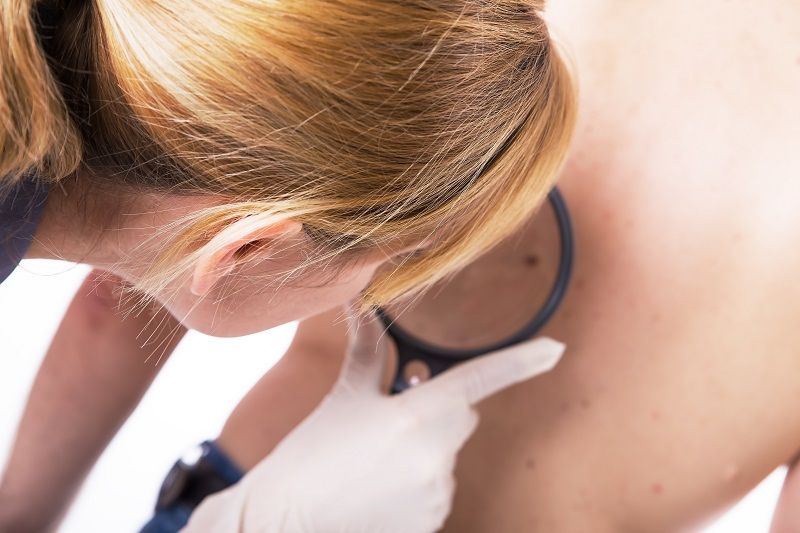Your doctor or nurse may recommend that you do a regular skin self-exam. If your doctor has taken photos of your skin, comparing your skin to the photos can help you check for changes.
The best time to do a skin self-exam is after a shower or bath. You should check your skin in a well-lighted room using a full-length mirror and a hand-held mirror. It’s best to begin by learning where your birthmarks, moles, and blemishes are and what they usually look and feel like. It is advisable to have self-skin checks once a month.
Check for anything new:
- A new mole (that looks abnormal)
- A change in the size, shape, color, or texture of a mole
- A sore that does not heal
- A growth that bleeds easily, itches all the time or hurts.
Check yourself from head to toe. Don’t forget to check all areas of the skin, including the back, the scalp, between the buttocks, and the genital area.
- Look at your face, neck, ears, and scalp. You may want to use a comb or a blow dryer to move your hair so that you can see better. You also may want to have a relative or friend check through your hair because this is difficult to do yourself.
- Look at the front and back of your body in the mirror, then raise your arms and look at your left and right sides.
- Bend your elbows and look carefully at your fingernails, palms, forearms (including the undersides), and upper arms.
- Examine the back, front, and sides of your legs. Also look between your buttocks and around your genital area.
- Sit and closely examine your feet, including the toenails, the soles, and the spaces between the toes.
By checking your skin regularly, you will become familiar with what is normal for you. It may be helpful to record the dates of your skin exams and to write notes about the way your skin looks. If you find anything unusual, see your doctor right away.
Second look, world of difference
Even if all you need is a second opinion from Roswell Park, we’re here for you! A second opinion is the best way to reassure you that your initial diagnosis of skin cancer is accurate and the recommended treatment strategy is right for you!
